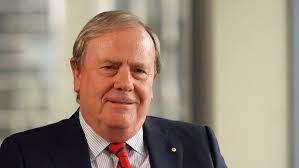
Private equity, including venture capital, remained the Future Fund’s largest pool of investment after listed equities at the end of March, representing 16.8% ($33.769 billion) compared to 30.9% for equities. The proportion of private equity was unchanged since the end of December but exposure to equities was down slightly from 31%.
Alternative investments, mainly hedge funds, were the asset class that recorded the biggest increase across the sovereign wealth fund’s portfolio; they rose from 14% at the end of December to 15.2% at the end of March.
Chair of the Future Fund Board of Guardians, Peter Costello, said: “Over the March quarter, global equity markets turned down sharply and the Australian market was flat. A large part of this was due to rising inflation which will lead to higher interest rates around the world and in Australia.
“In addition, the Russian invasion of Ukraine has added to risk for international investors. Following Russia’s invasion of Ukraine, the fund moved to sell down all holdings in companies listed on the Russian stock exchange. Sanctions on Russia and the closure of the Moscow Stock Exchange to foreigners have hampered efforts to sell. We will wind down the holdings as market conditions allow.”
He said the Future Fund had performed well in a challenging environment and had delivered positive returns despite market volatility over the last year and was still exceeding its target returns across all long-term horizons.
“As central banks tighten monetary policy to reign in inflation and geopolitical tensions continue to create shocks in investment markets, we have been positioning for what will be a challenging and volatile future. As we have been saying for some time, investors should expect lower returns than in the past over the long term.
“Our dynamic and disciplined approach to investing is designed to help us balance the return and risk objectives of our mandate.”
Chief executive Dr Raphael Arndt said: “We have been carefully positioning the portfolio to navigate the challenging investment environment. Our alternatives strategies are designed to perform in all market environments, and we have added to those.
“Looking ahead, we expect returns will be harder to achieve, with ongoing fragility and disruption to global markets and economies combined with rising inflation continuing as key themes for some time to come.
“The portfolio is positioned moderately below a neutral risk setting. We are maintaining our discipline to only take on risk where the potential rewards justify it.
“We continue our work to identify opportunities to access value from less liquid and more skill-based investments and working our relationships with our partners to identify more focused opportunities both to secure returns and to manage risk.”
At the end of March, the Future Fund’s total funds under management stood at $200.66 billion, down from $204 billion at the end of December. The fund was launched by the federal government in 2006 with $60.5 billion. No further funds have been allocated since then. The fund’s 10-year return at the end of March was 10% against a target of 6.4%
Image: Future Fund Board of Guardians chairman Peter Costello.

